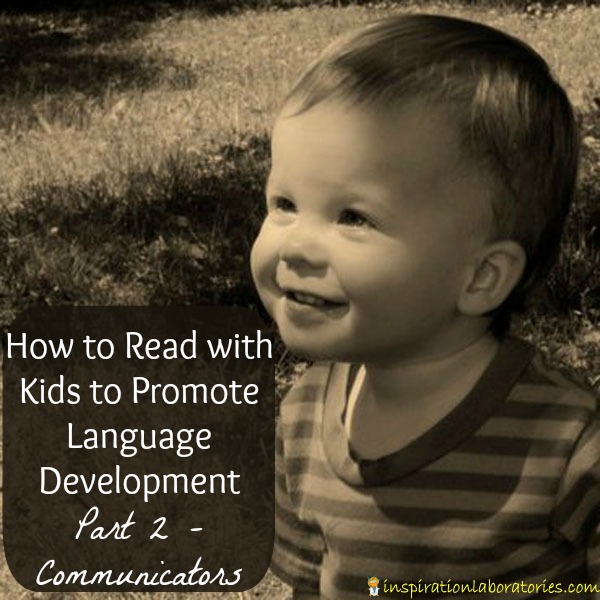How to Read with Kids to Promote Language Development – Part 2
Reading with young children promotes language development and literacy skills. Learn strategies for sharing books based on what type of communicator the child is from a speech-language pathologist. Part 2 of our series focuses on the communicator stage.
Part 1 – Discoverers
Part 2 – Communicators
Part 3 – First Word Users
Part 4 – Combiners
How to Read with Kids to Promote Language Development
Rachel is continuing to share strategies for reading to our children with us. Rachel is a speech-language pathologist (SLP) with training in children’s literacy and clinical experience in developing reading and writing skills in children.
Read part 1 of the series here.
We have been looking at what types of communicators our little ones are. Here are the stages that Rachel outlined last time.
- Discoverers: earliest stage of communication, child responds to environment through crying, body movement, and facial expressions. For example, child may smile in response to seeing a familiar face.
- Communicators: communicate by looking at you, making gestures, pointing, and making sounds.
- First Words Users: imitate words they hear or begin to use words by themselves. Initially say one word at a time using words that represent people, objects, and actions. Use one word to express an entire message
- Combiners: begins to use two-word combinations (i.e., “Want teddy.”)
Today, we will focus on Communicators. Welcome back, Rachel!
——————————————————————————————————————–
How to use books with the Communicator
- Read books that show familiar routines, or discuss a new routine/event the child may soon be experiencing (for example going to the zoo, doctor, etc.…). This helps give the child “background knowledge” and therefore helps them make connections between what they read and what they experience. Furthermore, talk about how your child participates in these routines. For example, “Johnny gets dressed, too.” “You have shirt, too. Where’s your shirt?”
- Use books with nursery rhymes, finger plays, songs, rhyme, and repetition such as Brown Bear, Brown Bear and The Very Hungry Caterpillar
- Create a home-made photo book: using construction paper fastened in a notebook, take colored pictures of a few of your child’s toys or familiar objects around the house (e.g., balls, rattles, bottle, keys…). Show only one or two objects in each photo and put each object against a plain background (white, light yellow). Put one picture on each page.
- “Read” wordless picture books. Let your imagination fly with this!
- Make connections between pictures and objects. Point to your child’s ball and the ball in the book.
- Use short, brightly illustrated books
Book reading at this stage is a good time to take turns and have fun with your child. Asking questions while reading is great, but only ask questions if you are sure the child has a way of answering (e.g., pointing, nodding). Incorporating actions –e.g., if character jumps, jump with your child while saying jump can also be a fun way to engage your child and help make connections between words, pictures, and actions/objects.
——————————————————————————————————————–
You can take a look at the photo book I made for Aiden. {Your child doesn’t have to be in the communicator stage for a photo book to be beneficial. Try it with later stages as well. I carried Aiden’s book in my bag for well over a year. He loved pulling it out while we were waiting somewhere.}
Book Recommendations for Communicators
Here are a few of Aiden’s favorite books when he was a Communicator.
 |
Moo Baa La La La |
 |
Barnyard Dance! by Sandra Boynton {Or really choose anything by Sandra Boynton. You can’t go wrong.} |
 |
Brown Bear, Brown Bear, What Do You See? Slide and Find |
 |
The Very Hungry Caterpillar |
 |
One Fish, Two Fish, Red Fish, Blue Fish Book & CD |
Rachel will be back to talk with us about the First Words Users stage tomorrow. {Read part 3 here.}
And I’ll be sharing more of our favorite books.
What are some of your communicator’s favorite books?
Connect with Inspiration Laboratories on Twitter, Google+, Pinterest, or Facebook . You can also subscribe to posts by e-mail.
Linking up here.
Disclosure: Amazon links are affiliate links. See disclosure policy for more info.
This post was first published on November 30, 2011.


Leave a Reply